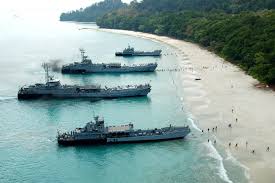The Indian Navy: A Pillar of Maritime Security

Introduction
The Indian Navy plays a crucial role in safeguarding India’s maritime interests and enhancing regional stability. With the increasing global maritime trade and rising tensions in the Indo-Pacific region, the significance of a robust naval force cannot be overstated. The recent developments within the Navy highlight its commitment to enhancing operational capabilities for maintaining peace and security.
Recent Developments
In recent months, the Indian Navy has taken several pivotal steps to bolster its operational readiness. Notably, the ongoing ‘Malabar 2023’ naval exercise involving the navies of the United States, Japan, and Australia signifies an important trilateral cooperation framework aimed at promoting a free and open Indo-Pacific. This year’s exercises included complex maneuvers, air defense operations, and anti-submarine exercises, showcasing the Navy’s enhanced capabilities.
Furthermore, the induction of advanced warships and submarines, such as the INS Vikrant, India’s first indigenous aircraft carrier, is a landmark achievement in terms of self-reliance and strengthening naval power. Commissioned in September 2022, INS Vikrant has a significant role in extending India’s reach and operational flexibility in the Indian Ocean Region (IOR).
Technological Advancements
Embracing modern technology, the Indian Navy is also investing in new research and development initiatives to enhance its fleet with unmanned systems and advanced weaponry. The ambitious project of creating the ‘Make in India’ initiative aims to develop indigenous defense technologies, reducing dependency on foreign military supplies. Ships like the Kolkata-class destroyers and the Scorpene-class submarines reflect India’s growing manufacturing prowess in defense technology.
Challenges Ahead
Despite these advancements, the Indian Navy faces numerous challenges ranging from traditional threats posed by regional adversaries to emerging cyber threats that could compromise naval operations. Continuous scrutiny of maritime routes and the need for enhanced surveillance capabilities remain priorities for the Navy. Moreover, securing strategic chokepoints in the IOR amid geopolitical conflicts is of utmost importance.
Conclusion
The Indian Navy stands as a formidable entity focused on ensuring maritime security and upholding international maritime laws. Its proactive strategies and robust modernization efforts highlight India’s commitment to safeguarding its territorial waters. As it continues to evolve, the Navy is set to play a pivotal role in shaping the strategy and stability of the Indo-Pacific region, making it relevant not only for India but for global maritime stakeholders as well.









